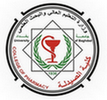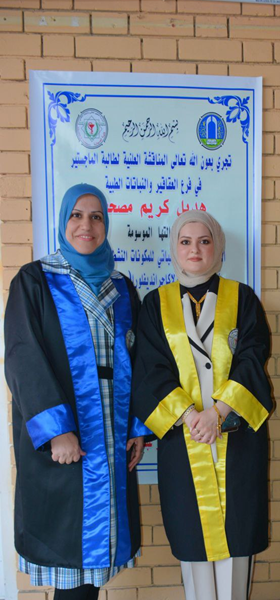The College of Pharmacy discussed the MSc thesis entitled “Phytochemical Investigation of Portulaca grandiflora (Portulacaceae) Cultivated in Iraq and Evaluation of its Wound Healing Activity” by the student Hadeel Kareem Mushib, and the supervisor, Associate Professor Dr. Thukaa Zuhair Abdul Jalil, at the Pharmacognosy and Medicinal Plants Department.The study aimed to extract, identify, isolate, purify, qualitatively and quantitatively estimate some known and unknown biologically important constituents that belong to six major groups of phytochemicals (phytosterols, triterpenoids, flavonoids, phenolic acids, coumarins, and alkaloids) from the whole plant of Iraqi Portulaca grandiflora. The study included the extraction of different active constituents from the whole plant using the sequential extraction method (Soxhlet apparatus). Specific chemical tests, thin-layer chromatography, high-performance liquid chromatography (HPLC), and gas chromatography/mass spectrometry were used to identify the active constituents in the different obtained extracts. Next, the compounds were isolated by different techniques such as the CombiFlash chromatographic system, HPLC, and preparative thin layer chromatography; and then were characterized by different chromatographic techniques and spectral analyses, including thin layer chromatography (TLC), Fourier transforms infrared spectroscopy (FT-IR), ultraviolet (UV) spectroscopy, Proton Nuclear magnetic resonance (1H NMR), Spiking method, liquid chromatography-mass spectrometry (LC-MS), and melting point determination. The study also involved the assessment of the wound-healing properties of n-hexane and ethyl acetate extracts in vitro, using the wound scratch assay, and in vivo on albino rats using the excisional wound model, by contrasting the wound-healing abilities of the tested extracts with those of commercially available MEBO ointment. At various periods, the size of the wounds was measured, and skin tissue samples were taken for histopathological examination.
The results showed the presence of several active constituents, including Lupeol, β-sitosterol, Daucosterol, Naringenin, Scopoletin, Genistein, Caffeic acid, Apigenin, Catechin, Luteolin, Syringic acid, Ferulic acid, and P-coumaric acid in different extracts of the plant. Some of these compounds were isolated for the first time from the plant. The results also showed that the ethyl acetate fraction, rich in phytochemicals as proved by phytochemical analytical screening, exhibited the best results, as it provided a faster rate of wound closure. The study recommended conducting further studies to identify other compounds that have not yet been detected in the Iraqi Portulaca grandiflora; and to use new extraction methods, such as microwave-assisted extraction, and compare their results with those of the current study. It also recommended carrying out additional pharmacological studies to investigate other potential pharmacological activities of the plant, as well as studying the various factors that affect the production of biologically active constituents in the plant, including environmental conditions, chemical agents, and harvesting time.




